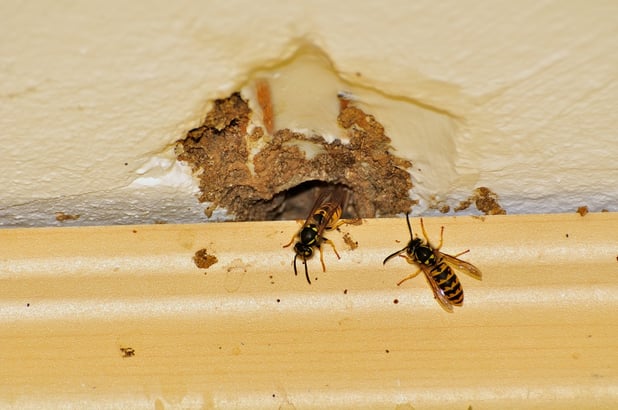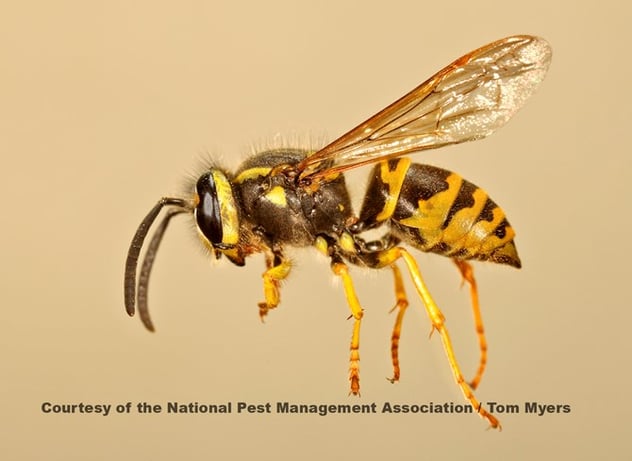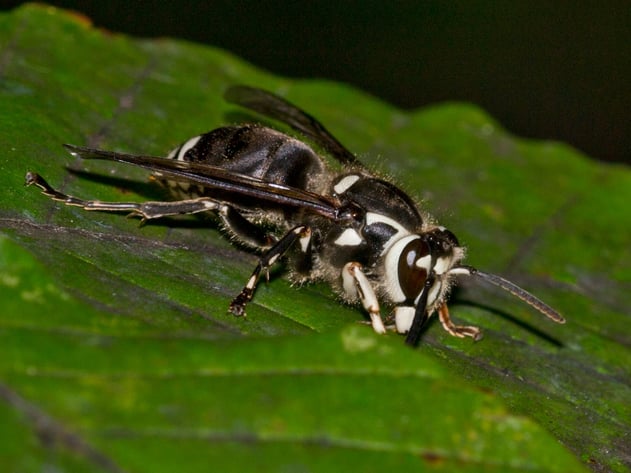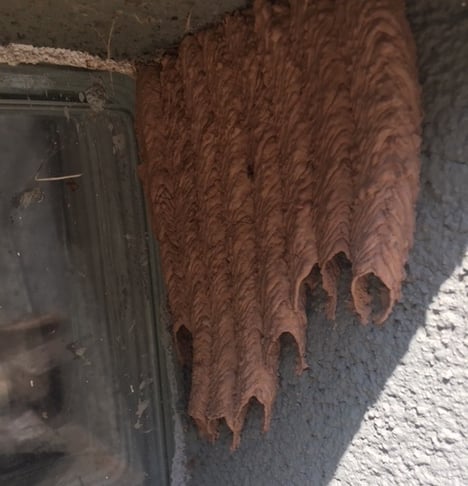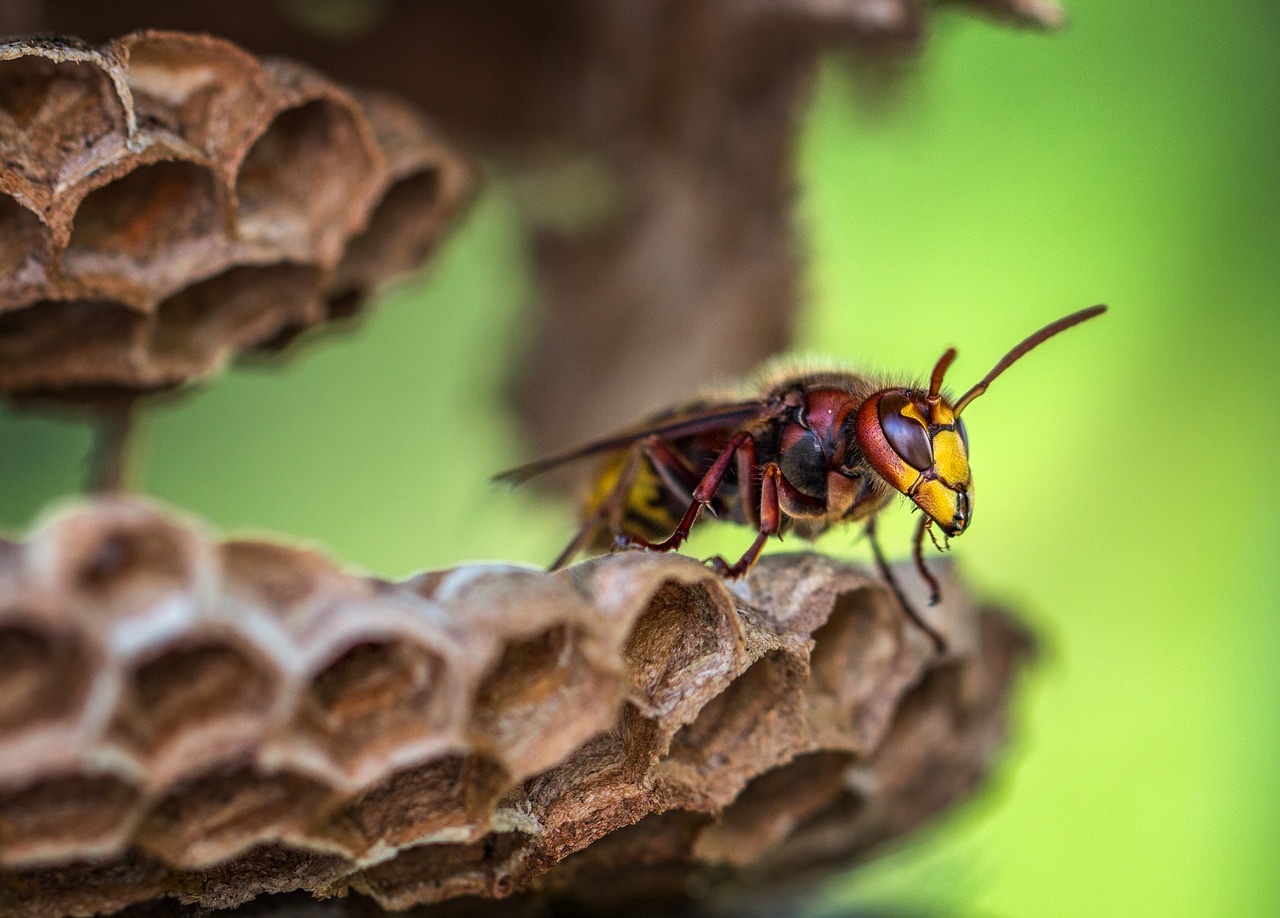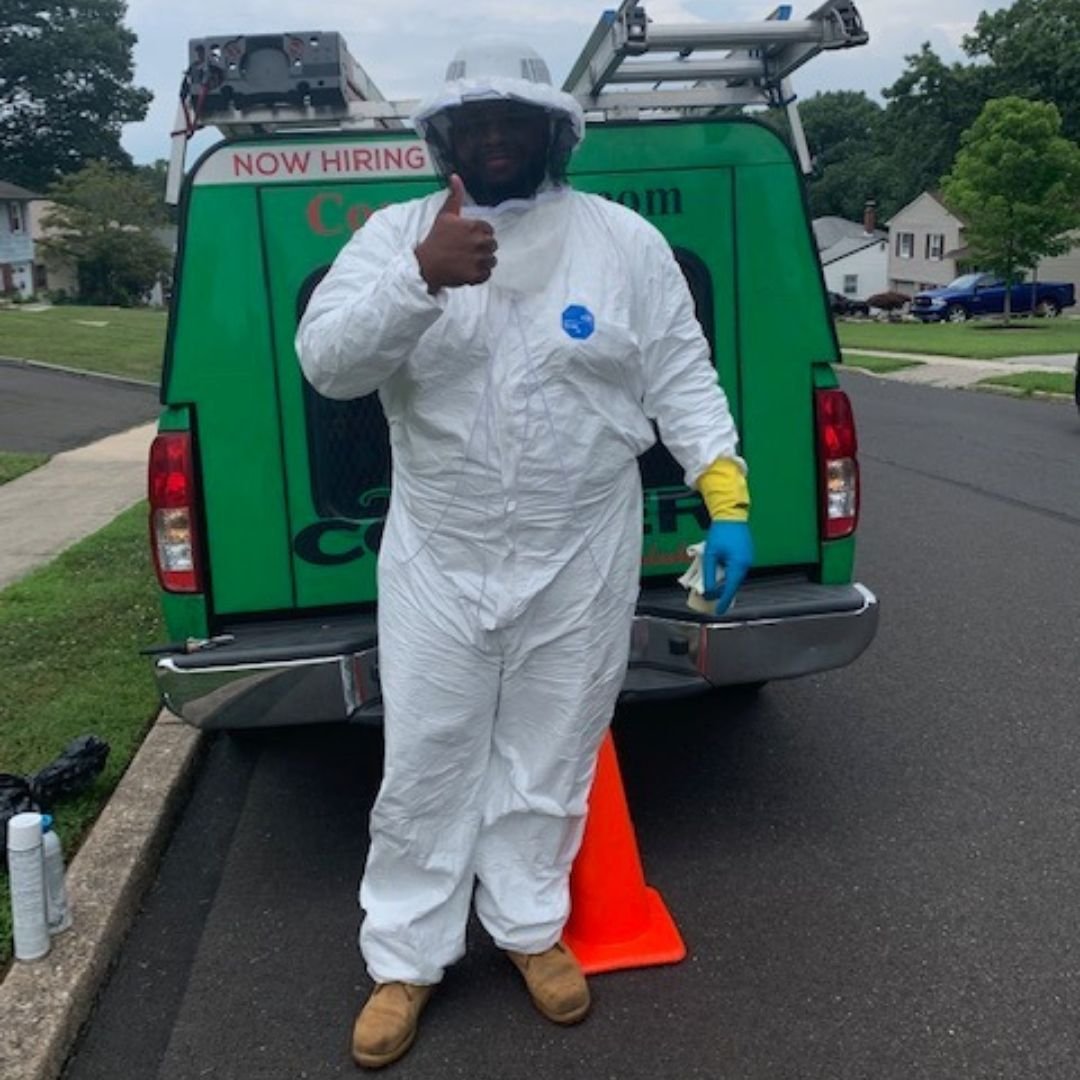Whether you want to or not, you will probably see some type of stinging insect flying around exactly when you want to spend time with friends, family, or your pool in your backyard. Once you discover a nest, it can be tempting to try to look up DIY solutions on YouTube and take it down on your own. Without training, the proper tools, and previous knowledge of pest biology and behavior, this brave act can prove to be incredibly dangerous. Are there safe ways to take down a wasp or hornet nest on your own? When does it come to the point that pest control professionals should intervene? We’ve researched all of the most common ways that “experts” across the internet suggest, and break down how effective or ineffective they truly are.
How to Identify Wasp Nests
So you’re seeing wasps flying around your property. At this point, you’re probably wondering what you’re even up against. Getting it 100% right the first time is crucial in successfully taking the nest down. Without the proper knowledge of stinging insect identification and a plan of action, things can go downhill quickly.
Yellow Jackets
Yellow jackets do not create nests that visibly hang from trees or structures. Instead, yellow jackets nest in the ground and wall voids of human made structures such as residential homes. If you see yellow jackets around your property, pay close attention (without getting too close) to where they are going in and out of. They create an entry point to the nest and move in and out of the hole as they constantly forage for nutrients to feed the colony. Adult yellow jackets feed on fruits, flower nectar, and tree sap. Additional sugary substances that are common barbecue snacks found in trash cans such as soda, iced tea, and fruits like watermelon and honeydew melon are among many things found in unsecured trash cans or left out an for the duration of your gathering. All of these items are readily found outdoors, so it’s simple for a nest to expand if they are not addressed.
Hornets
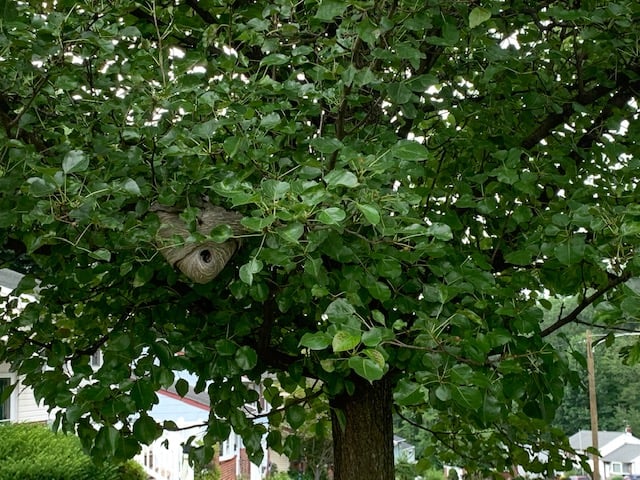 Hornets are another dangerous stinging insect, especially if you get too close to their nest. They create nests out of materials that they find in a close radius to the nest location such as decking, leaves, and other elements around your property that they can create a wood pulp from. Their nests start as big as a golf ball but can grow to the size of a basketball if left untreated.
Hornets are another dangerous stinging insect, especially if you get too close to their nest. They create nests out of materials that they find in a close radius to the nest location such as decking, leaves, and other elements around your property that they can create a wood pulp from. Their nests start as big as a golf ball but can grow to the size of a basketball if left untreated.
Mud Daubers
Mud wasps are also referred to as mud daubers. This type of wasp is easily the least aggressive. A single adult mud dauber will live within a nest unlike hornets and yellow jackets that create large colonies. You can tell that you have mud daubers by identifying their nest. These unique nests look like conjoined tubes with a mud color. The nests are usually created in a protected area such as under eaves on the outside of your home and within sheds.
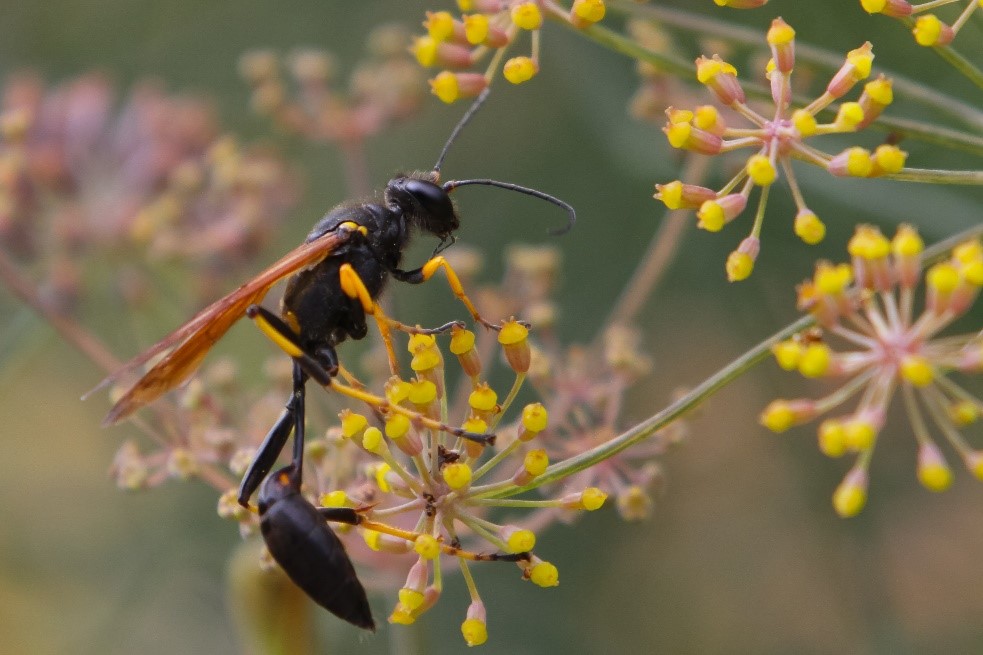
Paper Wasps
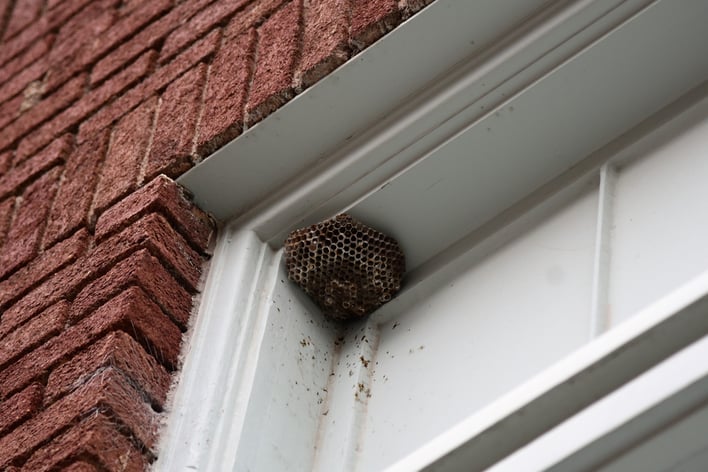 Paper wasps are about 3’4” long and are a commonly burnt orange-brown color. They can also have black and yellow stripes making them easy to mistake for yellow jackets. Paper Wasps are one of the first insects to become active in the early spring (April/May) as the temperatures begin to warm. Wasps will also remain active throughout the entire summer as they continue to build their nests virtually anywhere; inside window frames, on overhangs, in attic vents, under outdoor furniture, or on play equipment. They are moderately aggressive and will readily sting if they feel threatened or if you accidentally get too close to the nest.
Paper wasps are about 3’4” long and are a commonly burnt orange-brown color. They can also have black and yellow stripes making them easy to mistake for yellow jackets. Paper Wasps are one of the first insects to become active in the early spring (April/May) as the temperatures begin to warm. Wasps will also remain active throughout the entire summer as they continue to build their nests virtually anywhere; inside window frames, on overhangs, in attic vents, under outdoor furniture, or on play equipment. They are moderately aggressive and will readily sting if they feel threatened or if you accidentally get too close to the nest.
Do wasps sting?
Yes, wasps sting. Certain types of wasps are more aggressive than others. For example, yellow jackets will defend their nest if they feel like they’re being threatened. Whether intentionally or not, disturbing yellow jackets by touching their nest or coming too close to the nest can result in painful stings. On the other hand, mud wasps are much less aggressive. They can sting, but they largely ignore humans. The biggest risk for getting stung by any wasp, yellow jacket, or hornet is coming into contact with them, forcing them to defend their nest.
- If one lands on your skin, resist the urge to swat and instead gently blow on it.
- If stung, remove the stinger, clean the area with soap and cold water, and apply ice. Benadryl and hydrocortisone ointment may also help calm the reaction.
- Should you experience symptoms of an allergic reaction, such as tongue and throat swelling, wheezing, dizziness, shortness of breath or drop in blood pressure, call 911.
- If allergic to stinging insects, learn how to use an epinephrine kit and carry it with you at all times.
- If you suspect an infestation or notice a hive or nest on your property, contact a licensed pest professional to safely remove the threat.
How can I kill wasps?
If you are tempted to take down a wasp nest on your own, you’ve probably heard of the following strategies:
- Fire/Burning- Some people say that using fire will eliminate stinging insects and get rid of their nest. The problem with using flames is that nests are usually built in trees and bushes, or on your home. Trying to destroy a nest with heat will greatly damage your home or light vegetation on fire. Not the safest option.
- Dish Soap- A lot of bloggers and YouTubers suggest using a mixture of dish soap and water in a spray bottle to physically soak the active nest and eliminate the colony. This can be effective in certain scenarios. If you are brave enough to rely on soap and are willing to get within a few feet of defensive stinging insects, then it might be worth a shot. However, even if you complete this dangerous feat, soap won’t stop the pests from returning.
- Using a Bat- Even at night time, this is just not safe. Defensive wasps and hornets are willing to die for the colony and will sting when provoked. If someone treated your home like a piñata, you’d be angry too.
Professional Pest Control vs. DIY
Professional pest control services differ from any DIY treatments because they have access to different tools. For example, wearing bee gear allows technicians to get very close to the nest without the risk of getting stung.
Professionals also have access to industry-grade pesticides that will not only kill wasps and hornets but also prevent them from coming back. Knowing the biology and behavior of stinging insects is a big benefit that professionals have over DIYers. By understanding how they behave and why it’s more than just physically taking down the nest. Each case is different, and nests are treated differently by pest, level of infestation, and location.
How can I prevent wasps from coming back?
Without professional pest control, stinging insect prevention can be tricky. Stinging insects are attracted to things we love to eat outdoors such as watermelon, cantaloupe, and soda, that are uncovered. Even if food and drinks are covered, outdoor trash cans lids need to be fully secured to avoid stinging insects. Without professional pest control, it’s unlikely that you can prevent wasps from nesting on your home or in bushes and trees. However, you can prevent yellow jackets from entering indoors by making sure cracks and crevices around your home are properly sealed. In addition to yellow jackets, most pests can be prevented by properly sealing your home.
It’s up to you whether you’d rather try to take down a nest on your own or hire pest management professionals to take it down and provide preventative treatments for you. If you decide to put it in the hands of Cooper Pest, read below.
How can Cooper help?
Cooper Pest Solutions offers effective and specialized stinging insect services whether you are looking to prevent them from nesting on your home or need help with an active nest.
One-Time Wasp Nest Removal Service
Cooper’s One-Time Wasp Nest Removal Service addresses active yellow jacket, hornet, and wasp nests on your property. When a technician arrives at your home, they will be wearing protective gear to avoid being stung. They will use materials to penetrate the stinging insect nest and reduce the population. The next step is to safely remove the nest and dispose of it in a cleanly and effective manor to avoid leaving residue on your property. Our technicians always make sure that you are part of the decision, informing you of their exact procedures every step of the way. This service comes with a 90 day guarantee, which includes unlimited technician visits within this period.
Our One-Time Wasp Nest Removal Service is now able to purchase online! Click the button below to pre-pay and schedule your service online for fast technician dispatch. There is no need for an inspection.
If you’d prefer to have an inspection, a Cooper specialist can come to your home for a free no-obligation estimate. Call us at 1-800-949-2667 or fill out the contact form on this page to schedule the inspection.
Wasp Prevention Service
At Cooper Pest Solutions, we have a unique service that prevents Wasps from nesting on your home. With our knowledge of wasp biology, we've created cutting-edge treatments to successfully prevent wasps from nesting on your home, decks, swing sets, storage sheds, etc. One treatment will prevent nest development for up to six months. Our residential wasp prevention service is available as a one-time service and is also included with our Home Intensive or Home Traditional services.
Our preventative Wasp Service is 100% guaranteed and extends through September. Specifically, we will treat your home once between 4/15-5/15, and then we will come back in June and August to inspect and treat again if we find any new activity. If during this time, a nest is discovered in or on a structure we've already treated, we will treat this area(s) at no additional cost.
Home Intensive Plan
The Home Intensive Service Plan is designed to provide preventive pest and rodent control for your home, year round. This plan also includes coverage against bumble bees, hornets, yellow jackets, mud wasps, and paper wasps all year round. This is our most popular service for homeowners, with protection for over 20 common household pests. The service plan includes four preventive services per year. Each service is unique and will be accompanied by a detailed 30-point inspection report with detailed findings as well as providing you with important recommendations for your home. Each year you will receive three exterior maintenance services (March – November) and one interior service (December – February). The winter service will focus on the interior of the structure and is geared towards rodents and other pests that may live within the structure.
Home Traditional Plan
The Traditional Service Plan is a substantial value for the homeowner that does not want to be bothered by crawling insects, mice, and wasps. This plan also includes coverage against mud wasps, paper wasps, and yellow jackets up to 6ft. on a ladder. The Traditional Service Plan provides preventive pest and rodent control for your home, year round. As part of your plan, you will receive four services per year. Each year you will receive three exterior maintenance services (March – November) and one interior service (December – February). Coverage includes over 20 common household pests. The Home Traditional Plan offers coverage for fewer pests than the Home Intensive Plan, but both control stinging insects at varying levels.


